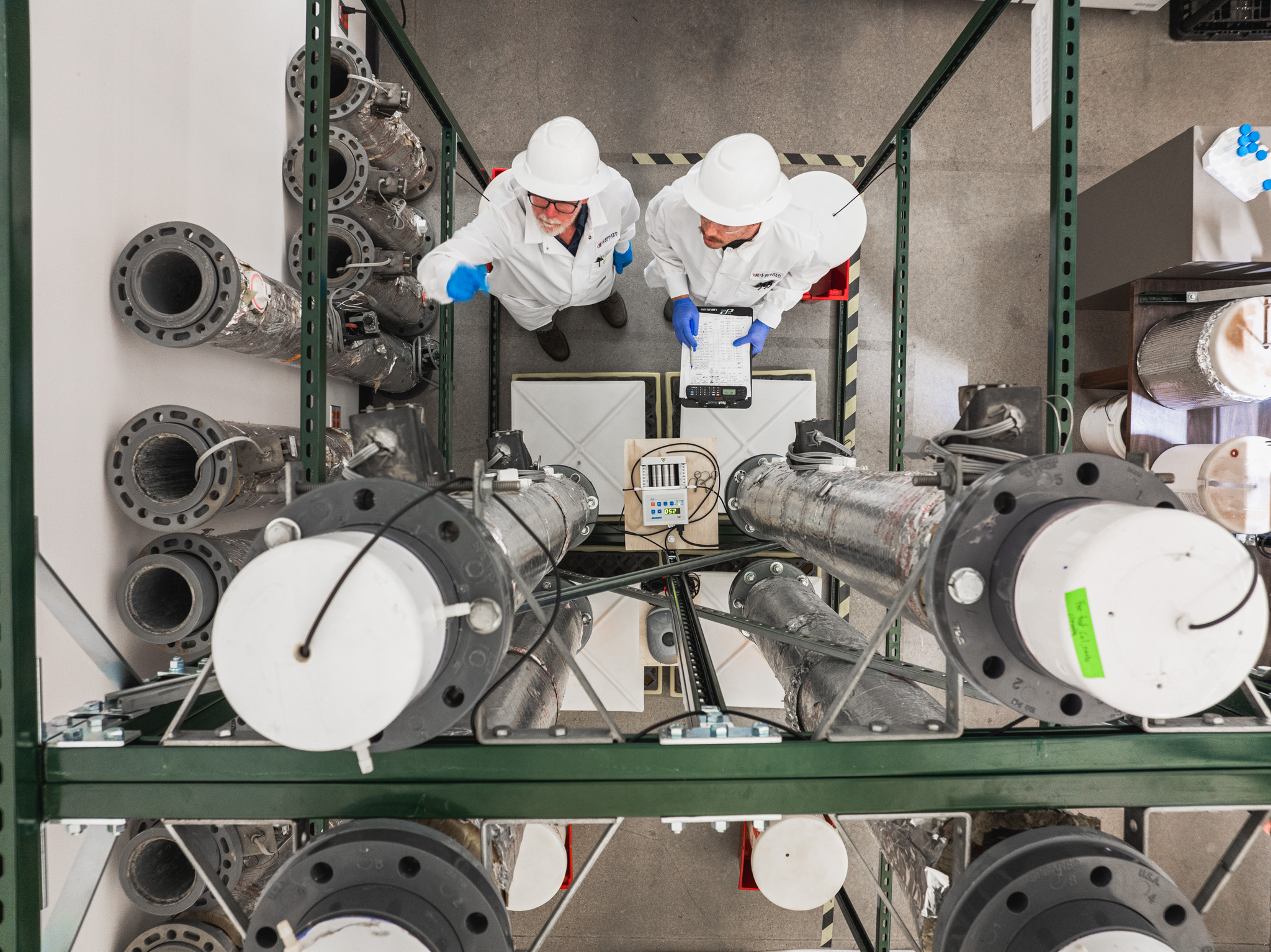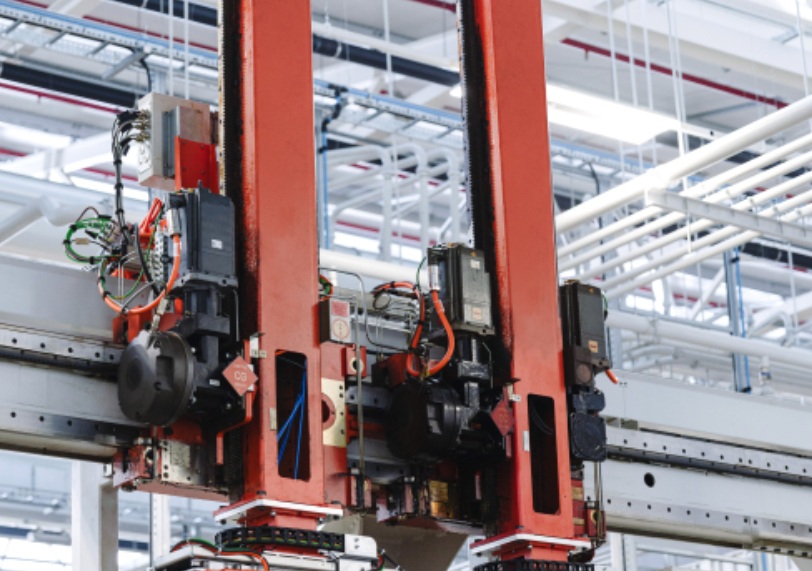Welcome to Climate Tech Pulse, your daily dose of market intelligence helping fuel the fight against climate change. From groundbreaking investments to cutting-edge research, we’re bringing you the latest in climate tech that’s shaping our future.
Don’t miss out on tomorrow’s climate solutions – subscribe now to stay ahead of the curve! https://lnkd.in/dwr7B9XJ
Today’s newsletter:

🔝Today’s Top Story: Transmission system operator Amprion GmbH (‘Amprion’) successfully issued another green bond today, totaling €1.1 billion.
📊 Today’s Data Point: Data from The Canadian Climate Institute provides a sector break-down of Canada’s climate policy.
🌳 Climate Insider Intelligence: Climate Insider’s deep dive on China’s DAC technology and expanding carbon markets.
Amprion’s Green Bond Jackpot: €1.1 Billion for Renewable Energy Sparks Investor Excitement
Image Credit: Amprion
Transmission system operator Amprion GmbH (‘Amprion’) successfully issued another green bond today, totaling €1.1 billion. The bond, issued in two tranches, garnered significant interest from investors.
Investor Confidence
Amprion’s green bond issuance of €1.1 billion has been met with investor enthusiasm, highlighting strong confidence in the company’s sustainable strategy. The bond was issued in two tranches: €500 million with a 3.125% coupon and a 6-year maturity, and €600 million with a 3.850% coupon and a 15-year maturity.
Green Financing
The proceeds from Amprion’s green bond are designated for sustainable projects that align with the United Nations’ sustainability goals, specifically Goals 7 (Affordable and Clean Energy) and 9 (Industry, Innovation, and Infrastructure). These initiatives are detailed in Amprion’s Green Finance Framework, which adheres to the International Capital Market Association’s Green Bond Principles. The framework and bond issuance have received a favorable second-party opinion from the ESG rating agency Sustainalytics, affirming their alignment with global sustainability standards.
Solid Ratings
Amprion’s green bond has secured solid investment-grade ratings, with Moody’s assigning a Baa1 rating and Fitch providing an A- rating, both with stable outlooks. This strong credit rating underscores Amprion’s financial stability and commitment to green initiatives. The bond issuance is part of Amprion’s broader €9 billion debt issuance program, demonstrating significant support for its sustainability goals and reinforcing investor confidence in its long-term financial health. Read More
Quote of the Day
“The positive response to our green bond underlines the investor confidence in our corporate and financing strategy. The proceeds will be invested exclusively in our green project portfolio, directly supporting our goals to expand and modernize the transmission grid to integrate more and more renewable energy.”
–Peter Rüth, CFO of Amprion.
Significance: Peter Rüth’s quote highlights that the strong investor response to Amprion’s green bond not only signifies trust in the company’s financial strategy but also ensures that the €1.1 billion in funding will drive significant advancements in integrating renewable energy through the expansion and modernization of its transmission grid.
Market Movers
- The FAA’s $291 million funding from the Inflation Reduction Act will support the development and adoption of sustainable aviation fuel and low-emission technologies, advancing the goal of achieving net zero greenhouse gas emissions from aviation by 2050. Read More
- Just Climate’s $150 million investment in Continuum Green Energy will significantly boost the development of renewable energy projects in India, advancing the country’s transition to sustainable energy sources and addressing high-emission sectors. Read More
- BNP Paribas SA and Canadian Imperial Bank of Commerce are backing HH2E AG’s 100-megawatt green hydrogen project in Germany, reflecting growing financial confidence in the project and its role in advancing the country’s ambitious hydrogen market and net zero goals. Read More
- The Manufacturing Technology Centre’s investment in a new sustainable additive manufacturing hub will advance the development of net zero products through innovative 3D printing technologies and comprehensive recycling processes, enhancing circularity in manufacturing. Read More
- The CURB Engineering Research Center, funded by a $26 million NSF grant, will drive advancements in converting carbon dioxide into sustainable chemicals and products, aiming to transform manufacturing towards zero or negative emissions and promote a circular economy. Read More
Tech Spotlight
Lotus-Inspired CO2 Conversion Device Offers Sustainable Fuel and Chemical Production
Image Credit: UCF
Researchers at the University of Central Florida (UCF), led by Nanoscience Associate Professor Yang Yang, have developed a breakthrough technology inspired by the lotus leaf. This innovative system captures carbon dioxide from the atmosphere and converts it into useful fuels and chemicals. By mimicking the hydrophobic properties of the lotus leaf, this device offers a promising solution to reduce carbon emissions while producing valuable chemical resources.
Commercial Viability
- Sustainable Production: The lotus-inspired device efficiently captures and converts carbon dioxide into carbon monoxide and formic acid, key raw materials in various industries. This capability could enhance the sustainability of chemical production processes, providing an eco-friendly alternative to traditional methods.
- Cost-Effective Implementation: The device’s design allows for integration at emission-heavy sites like power plants and industrial facilities, where captured CO2 can be directly converted into valuable products. This on-site conversion reduces the need for costly transportation and storage of CO2, making the technology more economically viable.
Technical Viability
- Advanced Filtration System: The device utilizes a microsurface composed of tin oxide and fluorine layers, which optimizes CO2 capture and conversion efficiency. The hydrophobic surface, inspired by the lotus leaf, prevents water accumulation, ensuring that CO2 is efficiently routed through the electrode for conversion.
- Customizable Conversion Pathways: The technology enables selective conversion of CO2 into various chemicals, such as methanol, methane, and ethanol, depending on the catalysts used. This flexibility allows for tailored production processes based on specific industrial needs, enhancing the device’s adaptability across different sectors.
Environmental Viability
- Reduced Carbon Footprint: By capturing and converting atmospheric CO2, this device directly contributes to reducing global carbon emissions. The selective conversion process minimizes energy loss, enhancing the overall efficiency and sustainability of CO2 utilization.
- Nature-Inspired Design: The lotus leaf-inspired hydrophobic surface not only improves CO2 capture but also aligns with sustainable design principles. This bio-mimetic approach reduces the environmental impact of the device, supporting long-term ecological goals.
Scaling Potential
- Scalable Technology: The modular design of the device allows for easy scaling, from small laboratory settings to large industrial applications. This scalability is crucial for widespread adoption, enabling the technology to be implemented across various sectors, from small manufacturing units to large power plants.
- Integration with Renewable Energy: The device can be powered by intermittent electricity sources, such as solar or wind energy, further enhancing its environmental and economic benefits. This integration with renewable energy sources makes the technology a viable option for a sustainable future.
Long-Term Implications
Yang’s lotus-inspired CO2 conversion technology represents a significant step forward in the quest to reduce carbon emissions and create sustainable chemical production methods. As the technology is further developed and scaled, it could play a crucial role in global efforts to combat climate change. By harnessing the principles of nature, this innovation not only addresses immediate environmental challenges but also lays the groundwork for a more sustainable and circular economy in the long term. Read More
Policy Pulse
This section includes global updates on climate change policy, governance and regulation.
PwC refreshes ‘Net Zero Action Plan’ to accelerate decarbonization.
PwC is updating its Net Zero Action Plan to prioritize decarbonizing operations and supply chains, with a goal to achieve net zero across its global network by 2030, focusing on emission reductions and offsetting.
Why it Matters: This update signifies PwC’s commitment to significant emission reductions, setting a precedent for corporate responsibility in achieving global net-zero targets. Read More
Australia passes legislation to create Net Zero Economy Authority, ensuring regional workers benefit from the clean energy transition.
The Authority will collaborate with various stakeholders to manage the transition to net zero, focusing on job creation, worker retraining, and easing clean energy investment.
Why it Matters: This development is crucial for managing the net zero transition by supporting job creation, retraining, and investment in regional areas, thus ensuring that communities and workers adapt effectively to the shift away from traditional energy sources. Read More
Today’s Climate Data Point
Key Insights on Canadian Climate Policy Mix
Source: The Canadian Climate Institute, Canadian Climate Policy Inventory.
As governments strive to reduce greenhouse gas emissions, the landscape of climate policy has become increasingly complex, especially in federations like Canada, where federal, provincial/territorial, municipal, and Indigenous governments share responsibility. The Canadian Climate Policy Inventory offers a comprehensive view of these policies, revealing the diverse approaches and challenges in coordinating climate actions across different levels of government.
To provide a clearer understanding of Canada’s current climate policy landscape, here’s a breakdown of key data points:
Sectoral Breakdown of Climate Policies in Canada:
- Transportation Policies: 24%
This sector dominates the climate policy landscape, with nearly a quarter of all policies aimed at reducing emissions from transportation. - Multi-Sector Policies: 23%
These include broad policies like the federal fuel charge and the output-based pricing system, representing nearly a quarter of the policy count. - Building Policies: 21%
Efforts to reduce emissions from buildings are a significant focus, comprising over one-fifth of the total policies. - Electricity Policies: 16%
Policies targeting the electricity sector make up a significant portion, reflecting the sector’s role in emissions reduction. - Oil and Gas Policies: 6%
Despite being a major source of emissions, policies targeting the oil and gas sector represent a smaller percentage of the overall mix. - Agriculture Policies: 5%
Agricultural policies contribute a modest share, highlighting the challenges of addressing emissions in this diverse sector. - Waste Policies: 2.8%
Waste management policies represent the smallest share, though they are crucial for addressing specific emission sources.
Key Insights:
- Complex Coordination: The division of climate policy responsibilities across multiple levels of government in Canada can lead to coordination challenges, potentially resulting in inefficiencies or unintended consequences.
- Dominant Sectors: Transportation, buildings, and multi-sector policies make up over two-thirds of the climate policies in Canada, indicating the primary focus areas for emission reductions.
Outlook: As Canada continues to expand and refine its climate policies, better coordination between federal, provincial, territorial, municipal, and Indigenous authorities will be crucial to avoid inefficiencies and ensure that emission reduction goals are met effectively. The Canadian Climate Policy Inventory will be an essential tool in tracking these efforts and providing insights for future policy development.
Significance: Understanding the distribution and focus of climate policies in Canada is vital for assessing the country’s progress toward its emission reduction targets. The data highlights the need for ongoing collaboration and policy innovation to address the challenges posed by a complex and varied climate policy landscape. Read More
In Other News
This section covers notable news highlights in climate tech.
- Fortera, a cement-making startup, has raised $85 million in Series C funding to scale its technology, which reduces cement’s carbon emissions by re-embedding CO2 into the product, offering a potentially cost-effective and efficient solution to decarbonize the cement industry. Read More
- A former UK nuclear power station site in Berkeley has been sold for £6.5 million, with the new owners, Chiltern Vital Berkeley, planning to transform it into a “super cluster” for nuclear energy research, training, and AI, aiming to establish the site as a key R&D center for next-generation nuclear technologies. Read More
Climate Insider Intelligence: Deep Dive on China’s DAC Technology and Expanding Carbon Markets
Image Credit: CarbonBox
China, the world’s largest carbon emitter, is poised to become a global leader in climate change mitigation. With groundbreaking technologies and an ambitious overhaul of its carbon market, the Asian giant is rewriting the rules.
Explore highlights with Climate Insider:
China’s Leadership in Climate Mitigation: China is on the path to becoming a global leader in climate change mitigation through groundbreaking technologies and an ambitious overhaul of its carbon market.
Advancements in Carbon Capture: China is scaling up its Direct Air Capture (DAC) capabilities, exemplified by the CarbonBox facility, which captures over 100 tonnes of CO2 annually per module and has potential scalability up to one million tonnes.
Comparison with Global DAC Projects: China’s CarbonBox technology stands out for its modularity and scalability, offering a distinct advantage over global DAC projects like Switzerland’s Climeworks and Canada’s Carbon Engineering. However, challenges include high energy demands and the need for significant investment.
Economic and Environmental Impact: China’s investment in DAC and Carbon Capture, Utilization, and Storage (CCUS) technologies could create new industries, drive economic growth, and reduce carbon emissions, positioning China as a key player in the global carbon market. Read More








